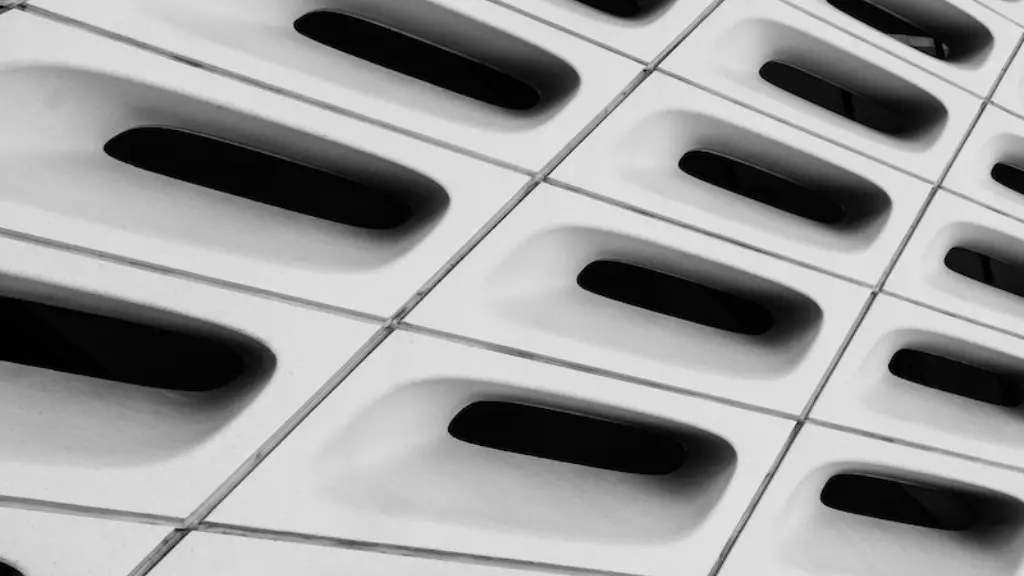What Is Biomorphic Architecture?
Biomorphic architecture is an emerging style of architecture that is derived from natural forms and natural inspiration. It is a style of design that takes its inspiration from the structure and physiology of organic materials and organisms. In other words, biomorphic architecture describes any building or structure that is inspired by plants and animals that have evolved in nature, including their shapes and movements.
Biomorphic architecture has been around since the early 20th century, however, it is slowly gaining more attention due to its ability to create structures and spaces that are more conducive to a wide variety of uses. For example, biomorphic architecture can be used to create more open, inviting, and energy-efficient structures. This style of architecture is also becoming increasingly popular in countries with tropical climates, where it can provide protection from the elements and help reduce the impact of climate change.
Biomorphic architecture takes inspiration from nature’s many shapes, forms, and textures. Natural materials are often incorporated into a design to create elegant and intricate patterns that enhance the overall aesthetic appeal of a project. For instance, curved lines, spiral staircases, and rounded corners are common features in biomorphic architecture. The use of natural materials can also contribute to a more sustainable design, as these materials can absorb and reflect less energy than traditional materials.
The goal of biomorphic architecture is to create structures that are aesthetically pleasing, comfortable, and energy-efficient. By taking cues from organic samples, architects can design spaces that are integrated into their environment, both inside and out. Additionally, this style of architecture can improve acoustics, reduce energy costs, and minimize the impact of climate change.
Environmental Benefits of Biomorphic Architecture
Biomorphic architecture is more than just aesthetically pleasing — it can also have a positive impact on the environment. By incorporating materials that are renewable and safe for the environment, it can help reduce the carbon footprint of a construction project. Additionally, biomorphic architecture often emphasizes the use of natural light, which is a more sustainable form of lighting.
By making use of natural elements, biomorphic architecture can also help reduce the pressure placed on local resources and further reduce the environmental impact of a building project. For example, by using green roofs and rainwater harvesting systems, architects can conserve water and reduce the demand on local water systems.
Creating Energy-Efficiency in Biomorphic Architecture
In order to make use of passive solar principles and other energy-saving designs, biomorphic architecture takes full advantage of natural energies such as sunlight and wind. Natural ventilation and temperature regulation can be achieved through careful placement of windows and walls, while green roofs and double-skin facades can help reduce energy consumption.
One way to optimize energy efficiency in biomorphic architecture is to make use of natural heating and cooling systems. This can be achieved through the use of geothermal systems, which take advantage of the fact that the ground temperature remains steady throughout the year. Such systems can provide a comfortable environment without relying on fossil-fuel powered air conditioning systems.
The Influence of Technology in Biomorphic Architecture
In recent years, technology has had a major influence on biomorphic architecture. Smart technology and energy-efficient designs have enabled architects to create sustainable structures that are tailored to the needs of their clients.
For example, the use of LED lighting can significantly reduce energy consumption, while motion sensors can be used to increase efficiency by only lighting areas that need to be lit. Smart thermostats can also be used to regulate temperatures in individual rooms, providing maximum comfort without increasing energy costs.
The Emergence of Biophilic Design
Biomorphic architecture has given rise to a new trend in architecture known as biophilic design. The core concept of biophilic design is that if a building can incorporate natural elements into its overall design, then it can help reduce stress and foster a sense of well-being among occupants.
By incorporating elements such as natural materials, plants, green roofs, and rooftop gardens, biophilic design can create a more calming and enjoyable environment. In addition to reducing stress, biophilic design can also help improve air quality and reduce energy consumption.
The Cost of Biomorphic Architecture
Biomorphic architecture is often more expensive than conventional architecture due to the expense of sourcing and incorporating natural materials into a design. Additionally, having an experienced architect with knowledge of natural forms and their applications is key to achieving the desired results.
These added costs should be weighed against the long-term benefits that biomorphic architecture offers. For example, reducing the energy consumption of a building can lead to significant savings over time. Additionally, biomorphic architecture can also promote a healthier living environment and add visual appeal to a project.
The Future of Biomorphic Architecture
As the world increasingly becomes focused on sustainability and reducing the environmental impact of buildings, it is likely that biomorphic architecture will only become more popular in the coming years. Architects and designers are constantly innovating with new technologies and materials to create structures that are more aesthetically pleasing, energy-efficient, and environmentally friendly.
Biomorphic architecture can provide a refreshing alternative to traditional design and can help create a space that is truly unique. As new technologies continue to emerge, architects and designers will have even more tools and materials at their disposal to create breathtaking biomorphic architecture projects.
The Role of Architects in Biomorphic Architecture
Architects play an important role in biomorphic architecture, as it is their knowledge and expertise that is needed to bring these projects to life. They must have a deep understanding of natural forms and their applications in order to design structures that are innovative and sustainable.
Architects must also have an eye for detail and be able to visualize the finished project in order to ensure that it meets the needs of the client and their budget while also staying within the parameters of the local regulations. Additionally, they should have an understanding of energy efficiency, natural materials, and smart technology in order to further ensure that projects are sustainable and cost-effective.
Conclusion
Biomorphic architecture is an emerging style that is derived from organic forms, materials, and inspiration. This style is becoming increasingly popular due to its ability to create aesthetically pleasing and energy-efficient structures. Architects can use this style to create innovative projects that are both environmentally friendly and cost-effective. As technology continues to evolve and new materials emerge, it is likely that biomorphic architecture will only become more popular in the years to come.


